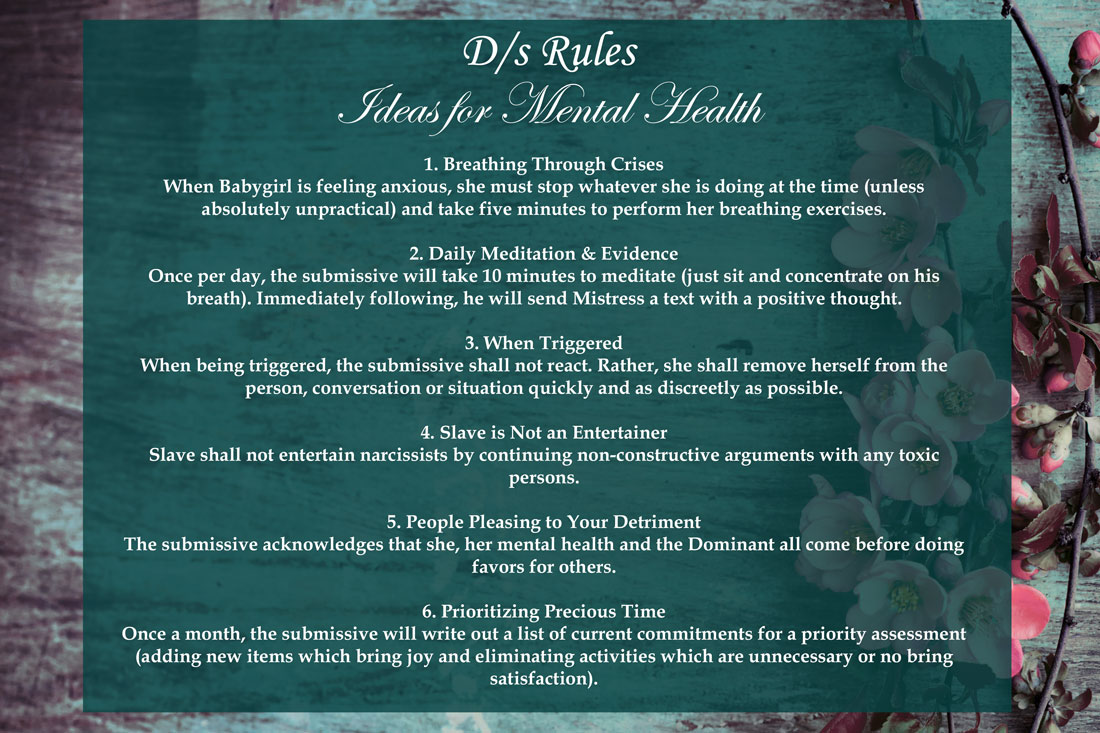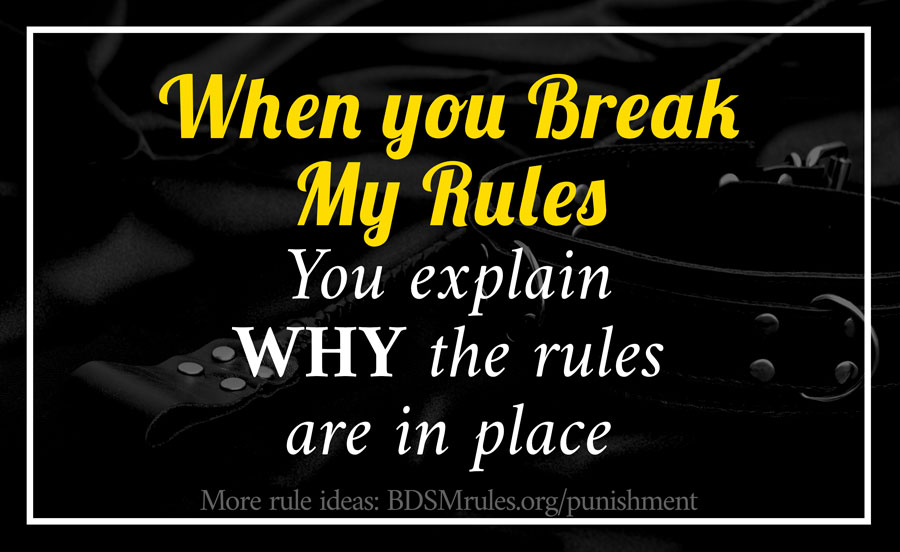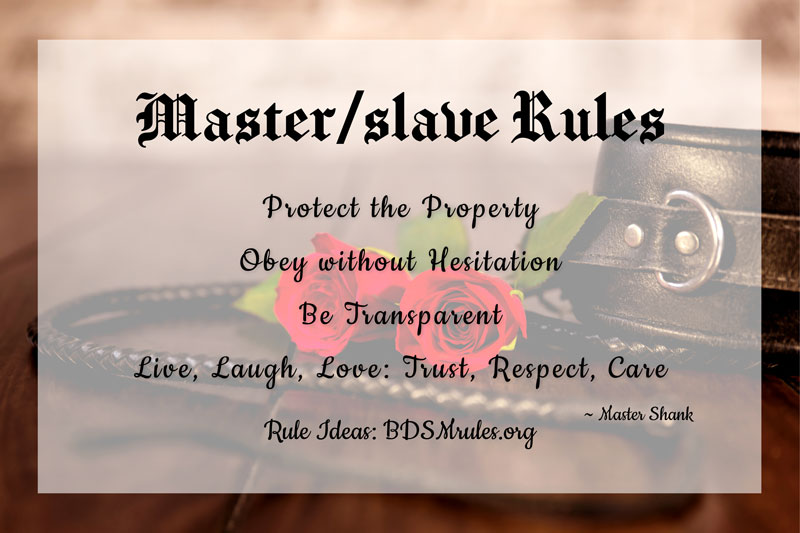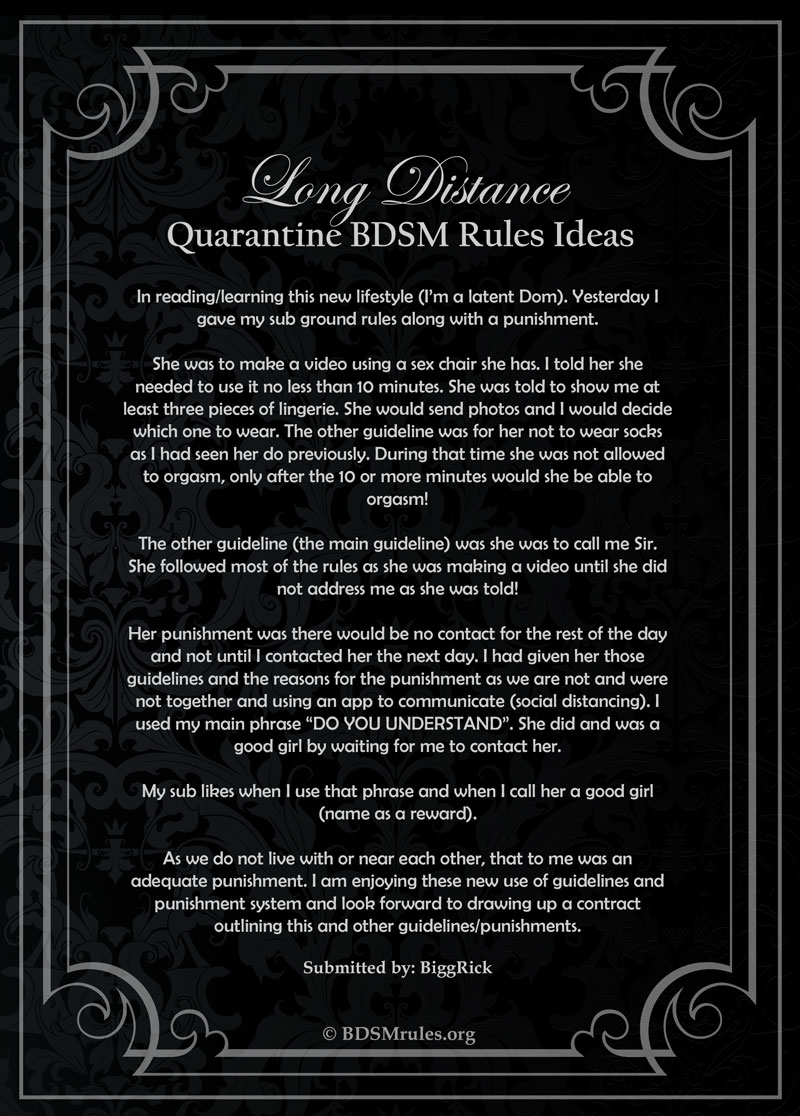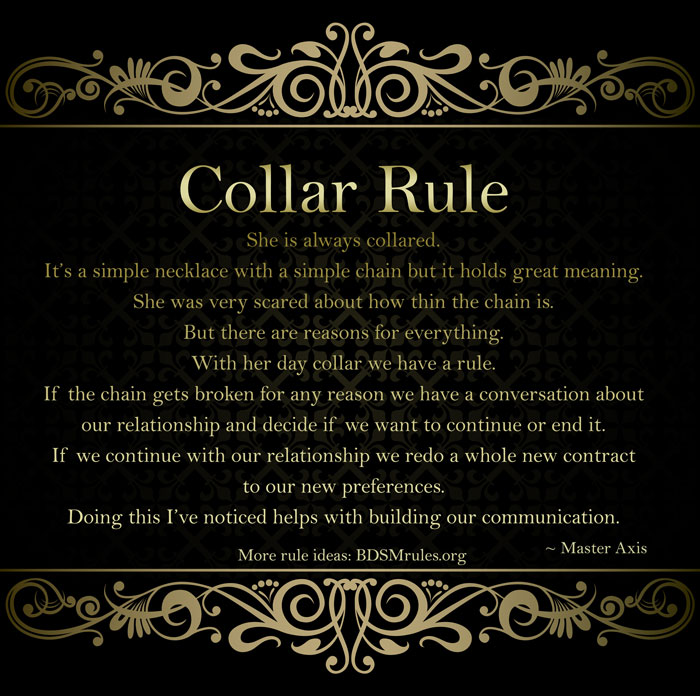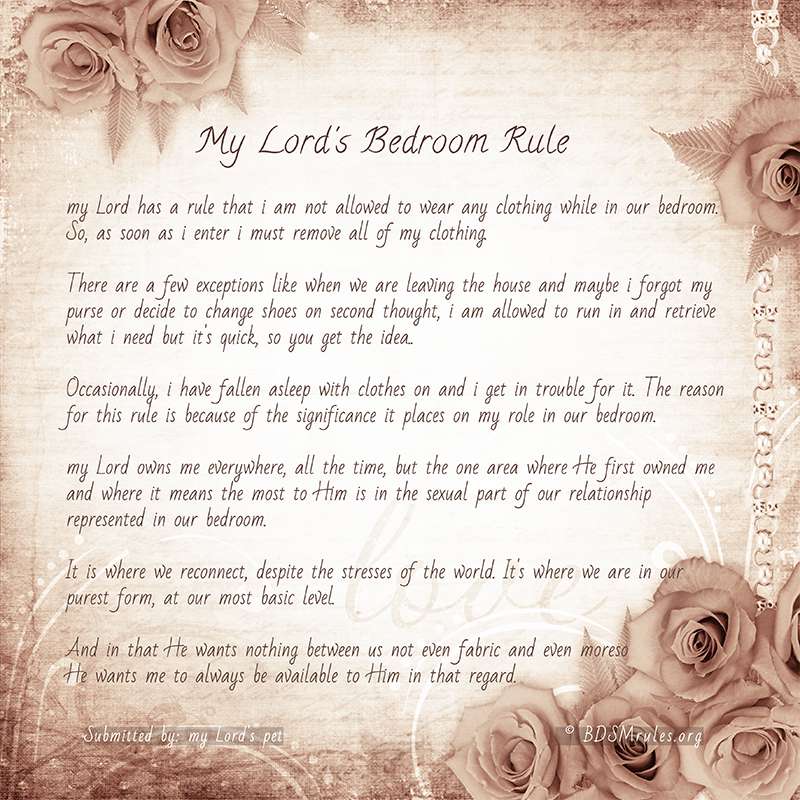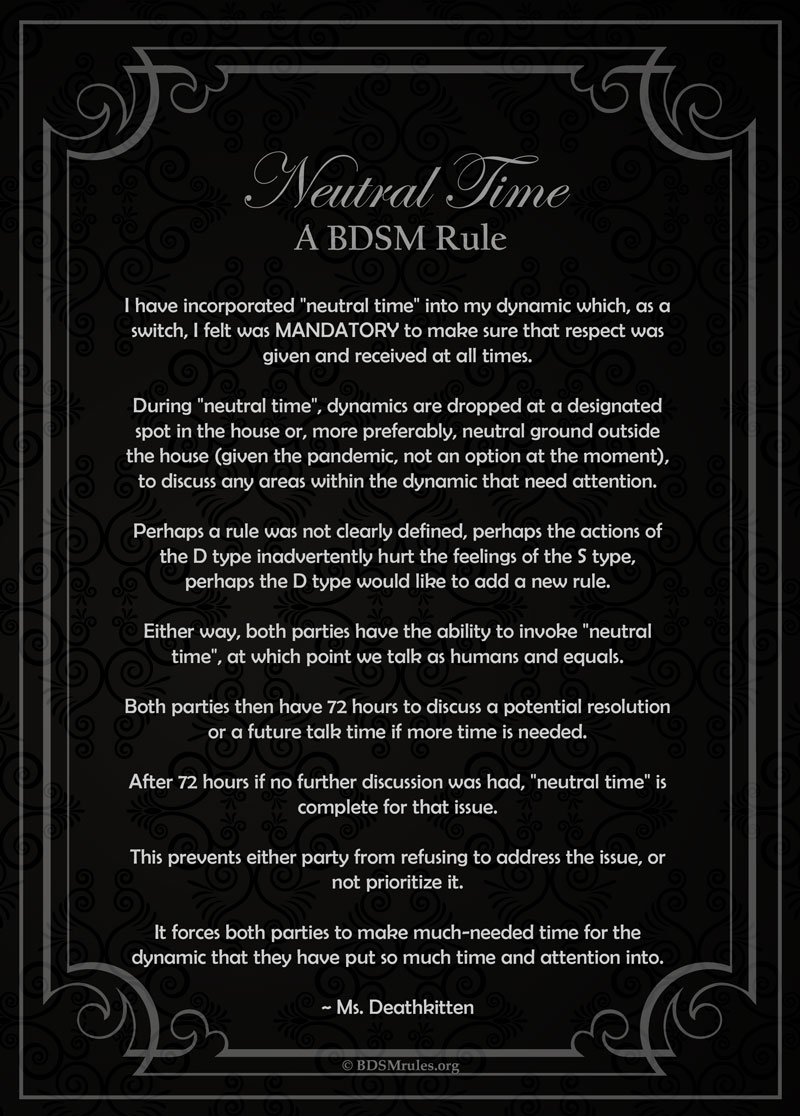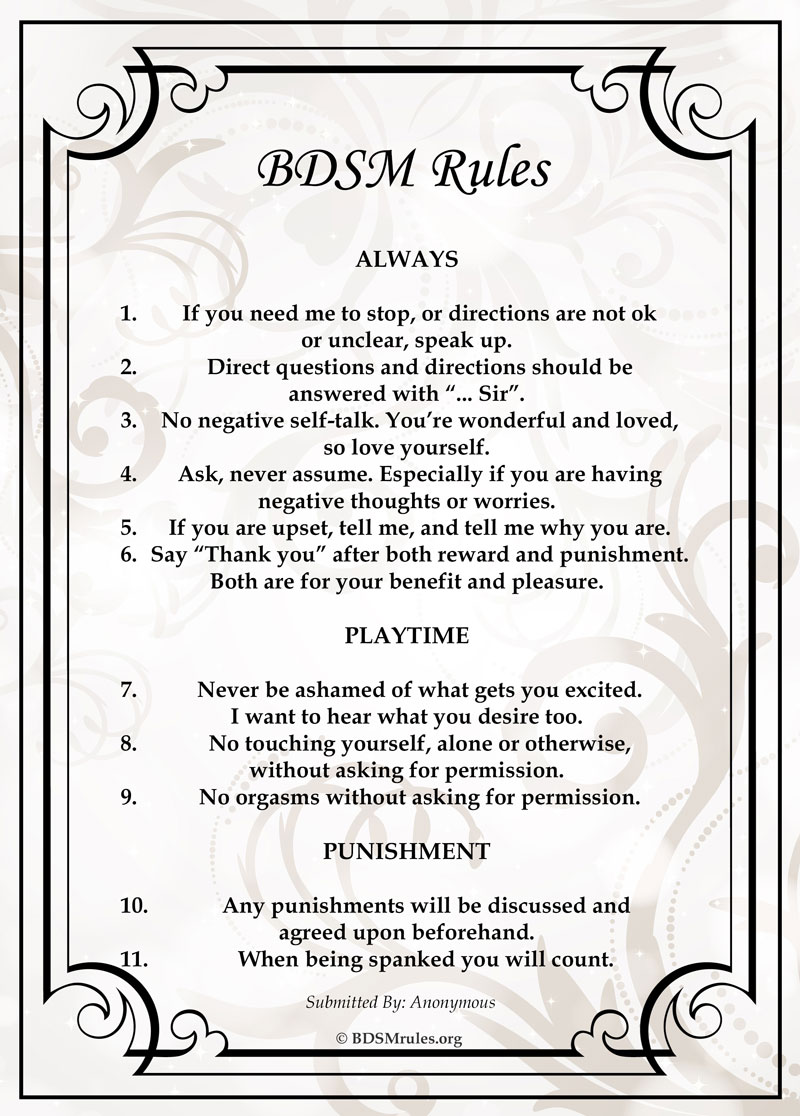
About BDSM Rules
Whether you’re into kink, power exchange, dominant and submissive relationships, Master/slave dynamics, 24/7 total power exchange or any other type of BDSM interaction, rules play a vital part in keeping your interactions safe and fun.
BDSM Rules refers to any agreed-upon regulation, which governs conduct or protocol (how a party must behave or respond) in a particular circumstance. Rules may be written or verbal.
They can cover anything from daily rituals and chores within D/s dynamics to preconditions, safe words, limits and aftercare for a kink play scene. Consent is a huge part of developing and enforcing rules in BDSM dynamics, even in Master slave relationships.
Even though to the outside eye, it appears the D-type (the person in charge) is making all the rules in a healthy dynamic or scene, all rules have been pre-negotiated, even if via blanket consent (not recommended for beginners).
Why have BDSM Rules?
Having rules provides multiple benefits, including:
- giving structure to a power exchange dynamic;
- all parties involved know what’s expected of themselves and of the other person(s);
- they are fun to come up with, comply with and enforce;
- makes s-types feel safe;
- gives encouragement to novice/shy D-types to be dominant, lead and use their authority;
- creates a distinction between abuse and consensual power exchange.
Examples and Ideas
How to Incorporate Rules into your Dynamic
The first step to instituting rules within your power exchange relationship is to first think about what you would each like from the arrangement. What aspects are you willing to give control over? When will the power imbalance apply? Then, discuss all the possibilities with your proposed partner.
It helps to have your rules in writing, so you can see everything that’s been agreed to. The easiest way to do this is to draw up some kind of agreement or use a BDSM Contract.
Once you’ve come to an agreement and have set a commencement date, you may like to have some kind of “commencement ceremony” to signify the start. It will help you get into the mindset and step into your roles.
Making sure your chosen Rules suit you
Unless you’ve experienced the type of interaction before, there is no sure way to know whether you’ll enjoy a certain rule or not. Fantasy can be deceiving and can end up being very different from reality.
The only way to know is to implement the rule and see how it feels. Do you enjoy it? Does it deepen your power exchange? Does it help you follow through with your goals? This is where check-ins are important.
You can set yourself a time (perhaps once a week?) to discuss how you’re feeling about certain rules and to propose any changes you’d like to make or remove some rules altogether. Don’t feel bad if a rule you deeply yearned for ends up being not what you expected. It happens all the time. Having the ability to communicate and adapt is what will keep your relationship strong and meaningful.
In addition to check-ins, daily journaling is also highly recommended. This is different from keeping a diary. A journal is used to express how you felt throughout the day as opposed to just listing things you’ve done. When a submissive presents their daily (honest) thoughts to the Dominant partner, the Dom is able to get insights to tweaking rules to suit the dynamic.
How to Enforce BDSM Rules
Without enforcement, there’s not much point in having rules. If a rule is broken and goes unnoticed or unpunished, this will ultimately lead to the demise of the power exchange.
In general, there are three ways to inspire observance: warning, punishment and incentives.
For a beginner sub, a newly introduced requirement or a minor infraction you may consider simply correcting the sub or giving a warning.
A repeat offence may warrant compelling observance using agreed methods of punishment such as spanking, corner time or denial of privileges.
Rewards are a great way of offering an incentive for compliance and balancing the negative emotional effects which may be associated with punishment. If a sub is only ever punished and never rewarded, there’s not much motivation to be or continue being a “good” submissive. Rewards can be anything enjoyed by the s-type such as gifts, massages or even just time with the Dominant partner.
What types of BDSM Rules are there?
In a very general sense, these are some common types of rules you can create:
Protocols – these are rules that govern how the slave is to behave or react in a given situation. For example, if the sub is approached by another person in a flirtatious way, what are the steps they must take (if any)?
Rituals – within a power exchange dynamic, you can set up rituals for special repeat events and stipulate what protocols are to apply before, during and after the ritual. For example, rituals for Master coming home, morning coffee, dinner, inspections or preparations for outings.
Etiquette – polite and appropriate behavior such as eating at the table or using “please” and “thank you”.
Chores – routine tasks assigned to the submissive such as house cleaning, cooking dinner, running errands.
Blanket Authority – rules not specifically negotiated, but designated by the Dominant under a general consent given in relation to a specific service or certain aspect of the submissive’s life.
Scene Specific – rules and limits which apply during a specific play scenario or scene involving any kink such as bondage, impact play, sensation play and role play.


